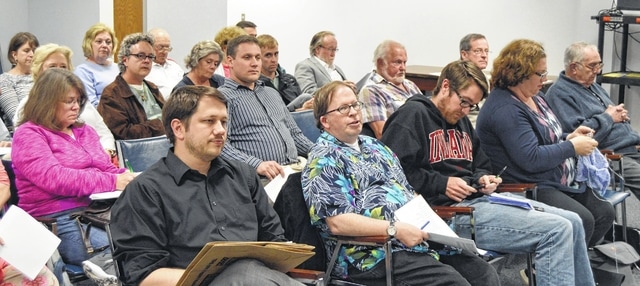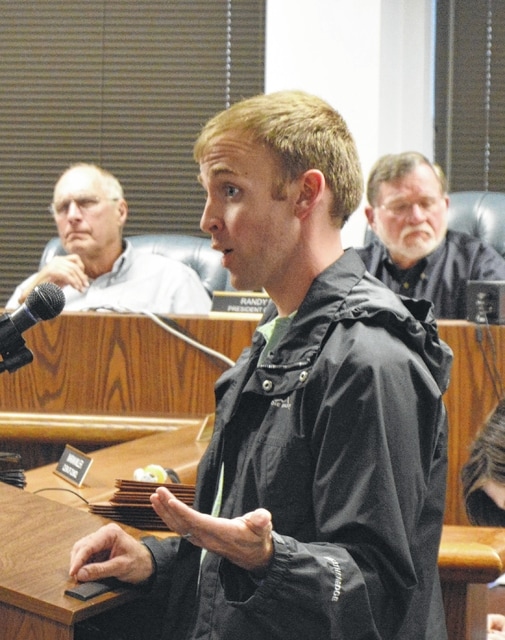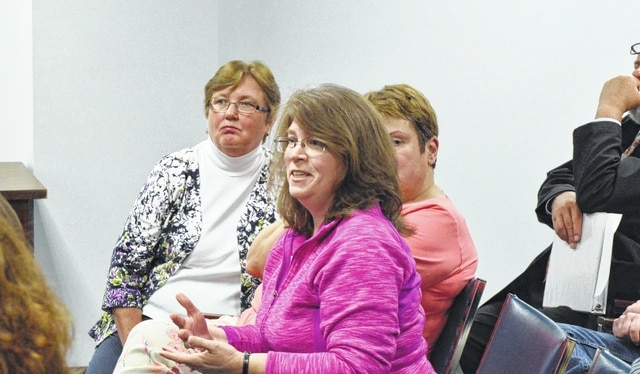


WILMINGTON — A public hearing on whether or not to fluoridate the city’s water was met with a packed room at Thursday night’s meeting of Wilmington council.
Since March, the water committee of council has been discussing whether to fluoridate water to 0.8 to 1.3 parts per million. The public hearing was scheduled to solicit community input.
“Our committee’s goal was to hear as much as we could from the community,” said Kelsey Swindler. Swindler previously told the News Journal she hopes the input will guide the water committee whether to move for fluoridation of the city water supply.
The next regularly scheduled meeting of the water committee is June 2 at 6 p.m.
At the hearing, all the medical professionals in attendance spoke in favor of fluoridating water, while residents spoke both in favor of or against the practice.
“The less fluoride, the better, and let the medical professionals diagnose individuals individually and decide whether or not the individuals receive fluoride,” said Joe Gigandet, president of the Clinton County Tea Party.
Gigandet said the fluoride could be prescribed “as a one size fits all … without full consent” that would cost residents.
“I know people are fearful,” said local dentist Levi Hamilton. “The 0.7 to 0.8 (ppm) range, if that’s what we’re hitting, it’s equivalent to about 1 penny in about $14,000, one inch in 23 miles or one minute in a thousand days. These are very low levels of fluoride.”
Hamilton said the American Dental Association, which endorses the use of water fluoridation, has found no documented cases of skin allergy as a result of public water fluoridation.
He also said boiling water doesn’t remove fluoride from it.
Hamilton said water fluoridation has been shown to decrease the rate of tooth decay by 20 to 30 percent in communities it’s introduced into.
“You’re going to spend a lot less and save a lot more if you fluoridate the water and aren’t paying to do those fillings and cavities through our state-run insurances,” Hamilton said of the cost of fluoridating. “It’s a no-brainer there.”
Due to background fluoridation in chicken nuggets, for example, Hamilton said people are currently exposed to fluoridation, “But virtually nobody is getting up to the recommended level of fluoride that you’re supposed to get.”
Vincent Larson, a Wilmington resident, asked who regulates the chemicals to ensure their quality and if they were a byproduct of fertilizer.
Joe Rae, chief operator at the Wilmington water plant, said all the additives the plant uses are approved by the National Science Foundation.
Dr. Shawn Swick, an internal medicine doctor, said the fluoride is bound to phosphorous in rocks before it is extracted. The phosphorous is sometimes used to create fertilizer.
“So, we’re not using byproducts of fertilizer to make the fluoride, rather it’s the other way,” Swick said.
Hamilton said water fluoridation affects a person’s tooth structure where topical products, like toothpastes, don’t. Ingestible supplements, he said, cost more than water fluoridation.
Wilmington resident Laura Struve said her pediatrician recommended using such supplements. She said the bottles cost $11 for a two-month supply for one child.
“It’s a five-minute hassle every day” to give them to her children, Struve said. “It’s over $100 out of my pocket every year that if I lived in Lebanon, I wouldn’t have to worry about.”
Wilmington resident Libby Rae and former water committee and council member David Hockaday asked about the effects of fluoridated water on those possibly susceptible to it.
Rae asked about those suffering from fluorosis and how fluoridating water might affect them. Hamilton said if they’re being treated for fluorosis they shouldn’t drink the city’s water anyway as it has a natural fluoride level of 0.2 ppm. Instead, they should drink distilled water or follow their doctor’s recommendations.
Dr. Terry Holton, the medical director of the Clinton County Department of Health, said skeletal fluorosis, a bone disease that can cause pain and damage to bones and joints, is much less common than dental fluorosis, which is staining of the teeth.
Skeletal fluorosis “is very uncommon compared to dental cavities, which are very common,” Holton said. “There are always risks and benefits, but basically by putting in the fluoride you’re trading a huge decrease in the amount of cavities for a slight increase in dental fluorosis.”
Hockaday said he agreed fluoridation would help children but was concerned about the effects to other residents, including those who have thyroid issues like himself.
“There is an accumulation effect that takes place,” Hockaday said. “Whether it’s toxic or not that’s another question.”
Hamilton said those affected by thyroid issues should be taken off of the local water supply currently, due to the natural fluoride level.
Dr. Ruth Dooley, a pediatrician, said studies showing negative thyroid or intellect effects were poorly done and unreliable.
“None of those have been proven, so there’s a lot of misinformation out there,” Dooley said.
Wilmington resident Cheryl Ford said her children were bottle fed on fluoridated water and have dental fluorosis, and her daughter, at 23 years of age, has thyroid issues now.
“I’m here as a cautionary tale,” Ford said. “You’re going to have a lot of parents out there … they may go directly to the bottle” and their children may get dental fluorosis. “We also need to balance and take a look at the other options, too.”
Wilmington resident Vince Holmes cited a Yellow Springs News article about the Yellow Springs council’s 3-1 vote to discontinue water fluoridation.
That report, found by the News Journal, quoted village council members saying there was no “hard evidence” of beneficent effects of fluoridation and a lack of research on the effects of fluoride on the rest of the body.
Holmes also asked if fluoridation would become a ballot issue.
Swindler said she preferred a publicly voted ballot measure rather than a council action.
The committee could recommend council vote on the measure, or it could recommend council place the measure on a ballot.
Reach Nathan Kraatz at 937-382-2574, ext. 2510 or on Twitter @NathanKraatz.




